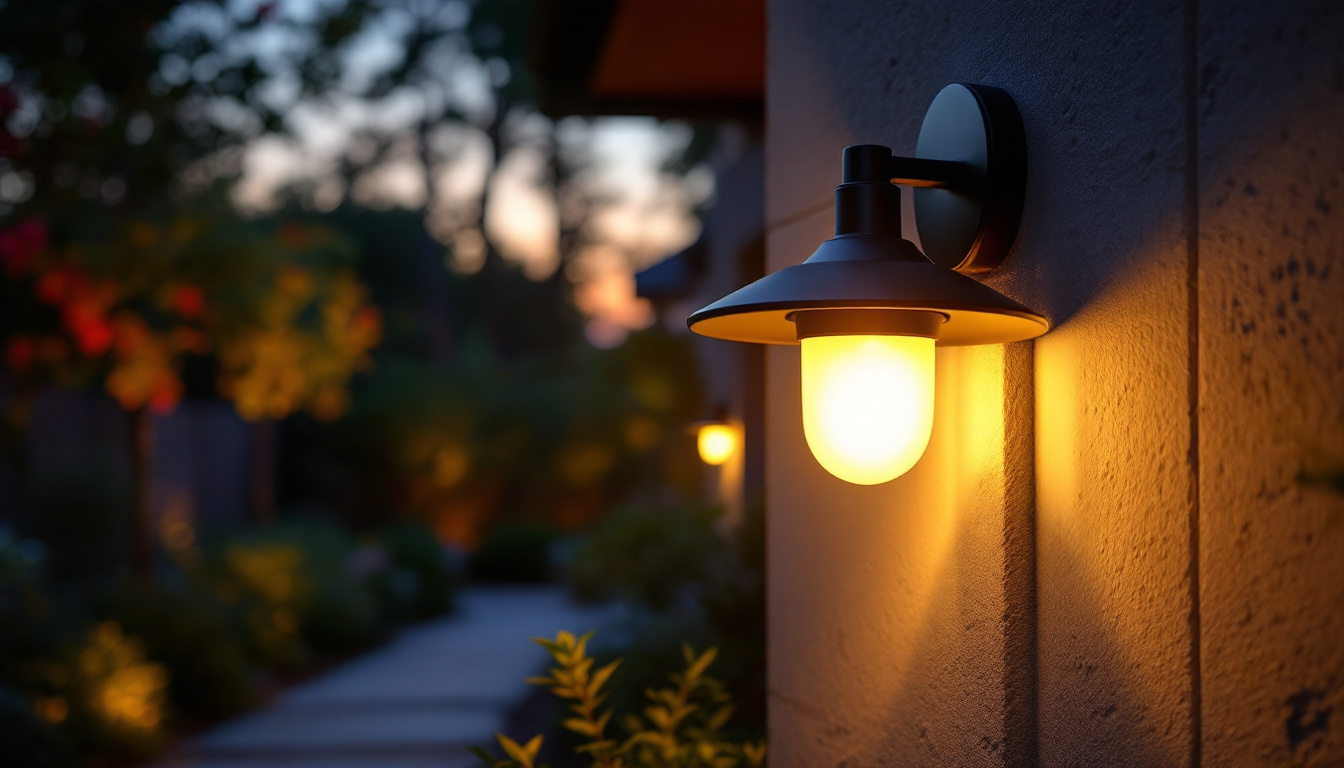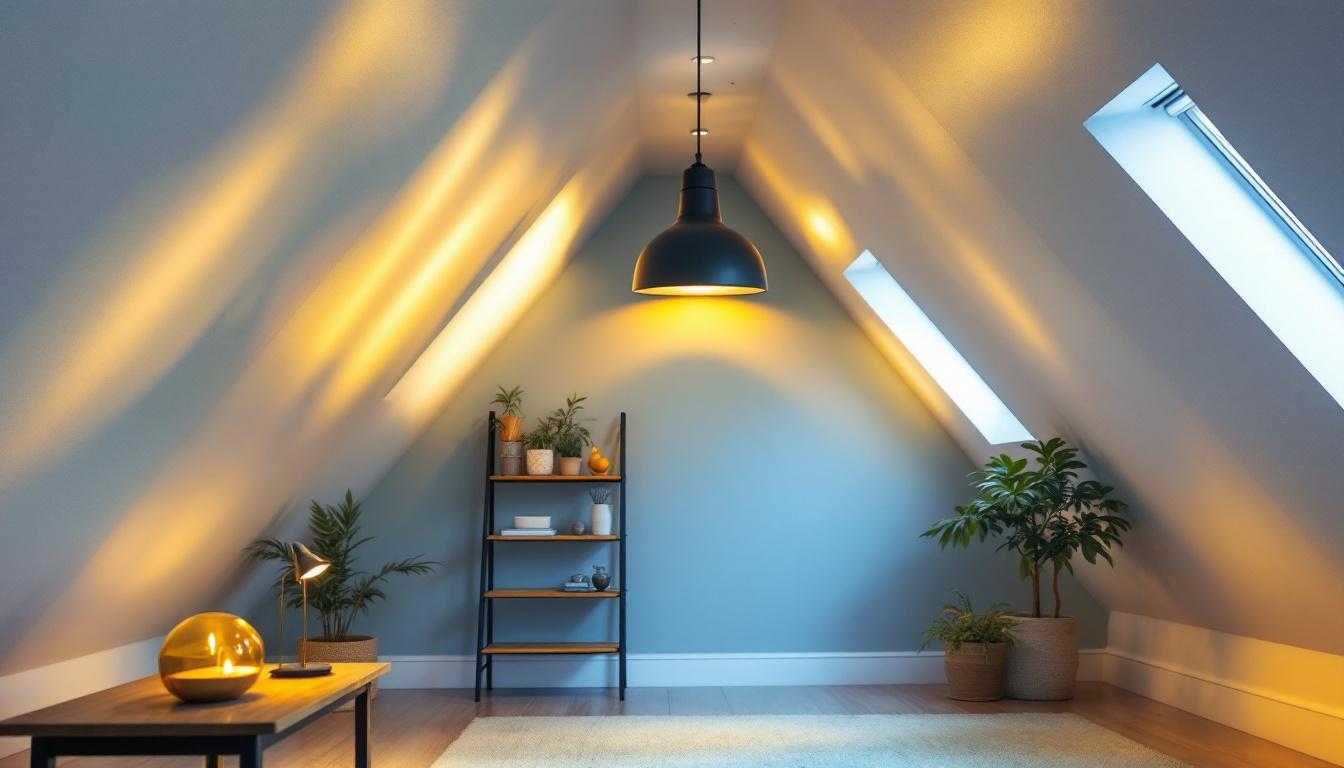
LED (Light Emitting Diode) bulbs have revolutionized the lighting industry, offering energy efficiency and longevity that traditional incandescent and fluorescent bulbs cannot match. As a lighting contractor, understanding the different types of LED bulbs available is crucial for providing clients with the best options for their specific needs.
This guide will explore the various types of LED bulbs, common mistakes to avoid when selecting and installing them, and tips for maximizing their benefits. By familiarizing yourself with the nuances of LED technology, you can enhance your service offerings and ensure customer satisfaction.
LED bulbs come in various shapes, sizes, and functionalities. The most common types include:
In addition to these common types, there are specialty LED bulbs designed for specific applications. For instance, LED filament bulbs mimic the vintage look of incandescent bulbs while providing the energy efficiency of LED technology. These bulbs are perfect for decorative fixtures where aesthetics are paramount. Furthermore, there are LED grow lights, which are specifically engineered to support plant growth by emitting the right spectrum of light. This has become increasingly popular among indoor gardeners and commercial growers alike, as it allows for year-round cultivation regardless of external weather conditions.
When selecting LED bulbs, it’s also essential to consider the color temperature, which can significantly affect the ambiance of a space. Measured in Kelvin (K), color temperatures can range from warm white (around 2700K) to cool daylight (up to 6500K). Warm white is often preferred for residential settings, creating a cozy and inviting atmosphere, while cooler temperatures are ideal for workspaces or areas requiring heightened alertness. Understanding these nuances not only helps in making informed choices but also empowers you to guide your clients toward the perfect lighting solutions for their environments.
Even experienced lighting contractors can fall into traps when selecting LED bulbs. Awareness of these common mistakes can help avoid costly errors and ensure optimal performance.
Color temperature is measured in Kelvin (K) and plays a significant role in the ambiance of a space. A common mistake is not considering the desired atmosphere when selecting a bulb. For example, a warm white light (around 2700K) is ideal for residential settings, while a cooler light (5000K or above) is better suited for workspaces.
Understanding the client’s needs and the intended use of the space can guide the selection of the appropriate color temperature, enhancing both functionality and aesthetics. Additionally, it’s worth noting that color temperature can influence mood and productivity; warmer tones can create a cozy, inviting environment perfect for relaxation, while cooler tones can promote alertness and focus, making them ideal for offices and study areas. Therefore, discussing these nuances with clients can lead to more satisfying lighting solutions that cater to their specific lifestyle or work requirements.
Many contractors mistakenly focus solely on wattage when choosing LED bulbs. However, lumens are the critical measure of brightness. LEDs consume significantly less wattage than traditional bulbs while providing the same or greater light output. For instance, a 10-watt LED bulb can produce the same lumens as a 60-watt incandescent bulb.
It is essential to educate clients about lumens and help them understand how to achieve the desired brightness without unnecessary energy consumption. Furthermore, it’s important to consider the specific application of the lighting; different areas may require varying levels of brightness. For example, task lighting in kitchens or workspaces may necessitate higher lumens to ensure safety and efficiency, while ambient lighting in living rooms can be softer and more subdued. By taking these factors into account, contractors can help clients make informed decisions that not only meet their lighting needs but also contribute to energy savings in the long run.
Proper installation is vital for maximizing the lifespan and efficiency of LED bulbs. Here are some common pitfalls to avoid during installation.
Not all fixtures are compatible with LED technology. Some older dimmer switches and fixtures may not work well with LED bulbs, leading to flickering or reduced performance. Before installation, it is crucial to check the compatibility of existing fixtures and switches.
Recommending compatible fixtures or retrofitting existing ones can help ensure a seamless transition to LED lighting. This step not only enhances performance but also increases customer satisfaction. Additionally, it’s worth noting that using LED-compatible dimmers can provide a smoother dimming experience, allowing users to enjoy the full range of brightness without the annoying flicker often associated with incompatible systems.
LEDs generate less heat than traditional bulbs, but they still require proper heat dissipation to maintain performance. Installing LED bulbs in enclosed fixtures without adequate ventilation can lead to overheating and premature failure.
Contractors should educate clients about the importance of using appropriate fixtures that allow for heat dissipation, ensuring the longevity of the bulbs and reducing replacement costs. Furthermore, it’s beneficial to consider the placement of LED fixtures; for instance, avoiding areas that experience high ambient temperatures can further enhance their lifespan. By strategically planning the installation environment, users can enjoy the full benefits of energy-efficient lighting while minimizing the risk of heat-related issues.
As the lighting industry evolves, so do the options available for LED bulbs. Understanding advanced features can help contractors provide more value to their clients.
Smart LED bulbs are gaining popularity due to their convenience and energy-saving capabilities. These bulbs can be controlled remotely, allowing users to adjust brightness, color, and even set schedules. Educating clients about the benefits of smart technology can lead to increased sales and customer satisfaction.
Moreover, integrating smart LED solutions into residential and commercial projects can enhance energy efficiency, making them appealing to environmentally conscious clients. The ability to link smart LEDs with home automation systems also adds a layer of security and convenience, as homeowners can simulate occupancy while away, deterring potential intruders. Additionally, many smart LED systems can provide usage data, enabling clients to track their energy consumption and make informed decisions about their lighting needs.
Color-changing LED bulbs offer versatility by allowing users to switch between different colors and moods. This feature is particularly appealing for spaces that require adaptable lighting, such as entertainment areas or retail environments.
Contractors should consider recommending these bulbs for clients looking to create dynamic atmospheres, enhancing the overall appeal of their projects. For instance, in a retail setting, color-changing LEDs can be programmed to align with seasonal promotions or special events, effectively drawing customers’ attention and creating a memorable shopping experience. Furthermore, these bulbs can be used in residential spaces to set the mood for gatherings, with options ranging from soft, warm tones for intimate dinners to vibrant colors for festive celebrations, showcasing the full potential of lighting design in enhancing everyday life.
While LED bulbs are known for their longevity, proper maintenance can further extend their lifespan. Here are some tips for ensuring optimal performance.
Dust and debris can accumulate on LED bulbs and fixtures, reducing light output. Regular cleaning can help maintain brightness and efficiency. Contractors should advise clients on the best cleaning practices, such as using a soft cloth and avoiding harsh chemicals.
In addition, ensuring that fixtures are free from obstructions can enhance light distribution and overall effectiveness. It’s also beneficial to clean the surrounding areas where the light is installed, as dirt and grime can reflect back onto the bulb, diminishing its brightness. By incorporating a cleaning schedule into their routine, clients can ensure that their lighting remains vibrant and effective over time.
Encouraging clients to monitor the performance of their LED bulbs can help identify issues early. If bulbs flicker or dim unexpectedly, it may indicate a problem with the fixture or the bulb itself. Prompt attention to these issues can prevent more significant problems down the line.
Providing clients with a checklist for monitoring their lighting systems can enhance their experience and foster long-term relationships. This checklist could include recommendations for tracking the lifespan of bulbs, noting any changes in brightness, and scheduling periodic inspections of their lighting systems. Additionally, educating clients about the signs of potential electrical issues, such as buzzing sounds or unusual heat, can empower them to take proactive measures before minor problems escalate into costly repairs.
Understanding the various types of LED bulbs and the common mistakes associated with their selection and installation is essential for lighting contractors. By avoiding these pitfalls and embracing advanced technologies, contractors can enhance their service offerings and ensure client satisfaction.
Moreover, educating clients about the benefits of LED lighting, including energy efficiency and longevity, can position contractors as trusted experts in the field. By staying informed about the latest trends and technologies, contractors can continue to provide exceptional service and thrive in a competitive market.
In summary, LED lighting is not just a trend; it is a fundamental shift in how we illuminate our spaces. By mastering the intricacies of LED technology, lighting contractors can lead the way in creating sustainable, efficient, and aesthetically pleasing environments for their clients.
Ready to elevate your lighting projects with the highest quality LED bulbs at unbeatable prices? Look no further than LumenWholesale. Our spec-grade lighting products are designed to meet the needs of discerning contractors like you, offering reliability and performance without the inflated costs. Say goodbye to middleman markups and hello to hassle-free bulk purchases with free shipping. Don’t compromise on quality or value—choose LumenWholesale for the perfect blend of affordability and convenience. Wholesale Lighting at the Best Value is just a click away.

Discover how dusk to dawn light fixtures can revolutionize your home’s energy efficiency.

Discover why lighting contractors should prioritize attic spaces in their projects.

Discover the ultimate guide to selecting the perfect plug for washers, tailored specifically for lighting professionals.

Discover the top challenges lighting contractors face when installing IC rated pot lights.